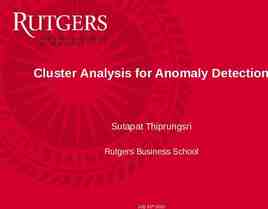Community Psychology Psychology 4510 Spring 2014 Allana
8 Slides191.07 KB
Community Psychology Psychology 4510 Spring 2014 Allana Zuckerman, M.A.
Today’s Overview Opening activity debrief Perspective Taking Individualistic perspective Structural perspective Definitions What is community psychology? First and Second Order Change Definitions of first and second order change Applying these definitions to real world issues Class discussion on ways to apply these concepts
Perspective Taking and Problem Definition Individualistic perspective Focus on individual attributes that contribute to human behavior Structural perspective How systems (e.g., organizations, neighborhoods, communities and societies) influence human behavior
Definition “Community psychology concerns the relationships of individuals with communities and societies. By integrating research with action, it seeks to understand and enhance quality of life for individuals, communities, and societies.” (Kloos et al., 2012, p.12)
First and Second Order Change First order change: Individualistic Perspective Reaction to pressing needs Adjust to the system Second order change: Structural perspective Focus on changing social roles and power relationships that create the problem Tensions between change versus stability makes Second Order change difficult – BUT
Examples of First and Second Order Change: Differential treatment of LGBTQ Couples First order change Make it easier for those discriminated against to file grievances Report people who discriminated against members of LGBTQ community and have them reprimanded Receive recognition and compensation for losses Second order change Identify and change policies that are discriminatory Legalize gay marriage Reform tax policies that discriminate against gay couples Institute and enforce state or local no-tolerance anti-bullying laws Encourage tougher penalties for committing hate crimes
Homelessness First order change? Second order change?
Final Points Community psychology takes a structural perspective to understanding human behavior and conditions Second order change includes an understanding of how structural and systemic factors contribute to societal problems













